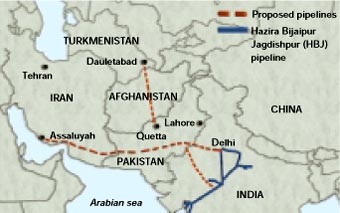Website review: http://www.inequality.org
The global divide in income, health and wealth has only widened further in this era of unregulated capitalism. And there are no signs of it being bridged
The global divide in income, health and wealth has only widened further in this era of unregulated capitalism. And there are no signs of it being bridged

US Mission in Iraq The fear of worsening economic crisis has the Americans agonising over the costs of a long-drawn engagement in Iraq. There is increasing pessimism about the us's "mission'

delhi 's forests are shrinking at an alarming speed. The ridge is depleting at the rate of one per cent every year, reports Vatavaran , a Delhi-based non-governmental organisation. There
a mysterious disease has struck thousands of sesam trees in the plains of north Bihar. The trees, which provide timber worth several crores, are drying up fast. The disease may also affect

The bid to reafforest the Himalayas could actually backfire on its ecology. Exotic plants which have the ability to grow rapidly and used for the programme are having an anis on the soil, water

It wasn't just India and Pakistan's cricketing equations in the World Cup that remained unchanged during February-March (India maintained its winning run). The politics of gas pipelines also carried

The US congress has reportedly approved a $5 million waiver, thereby quantifying the debt for nature swap offer made to Sri Lanka more than two years ago. It is widely believed that this sum is peanuts, considering that Sri Lanka owes the us close to $1 b

prominent wildlife scientist, Ulhas Karanth, recently called for a new tiger count system. Karanth's suggestions include a range of new and simpler techniques of counting tigers which he said

<b>The Skeptical Environmentalist: Measuring the Real State of the World</b>
The peak tourist season has slalomed into controversy at Alpine ski resorts, particularly those in spick-and-span Switzerland. The annual deluge of millions of tourists to the Alps is giving both

tce is a nonflammable, colourless liquid. It is mainly used to remove grease from metal parts. Worldwide almost 80 90 per cent of this chemical is used to degrease metals

a ban on tourism in core areas of national parks and a general ceiling on visitors to sanctuaries, tiger reserves and other protected areas (pa), have been proposed in the revised guidelines for

griha, a rating system for green buildings developed by The Energy and Resources Institute ( teri ), has been formalized as the first national rating system. teri signed a memorandum of
The <i> mokasodari </i> system has its origin in pre-liberation Goa when mokasodars used to collect revenue from the villagers. Says Amrut Kasar, land rights expert, a <i>mokasodar</i> was not just a revenue collectors, he enjoyed a high social and political status in the village. The Portuguese colonial rulers allowed the <i>mokasodar'</i>s permanent land rights. <br><br> But there is no legal clarity over these rights because the original residents of the villages, the <i>goankar</i>s, also claim ownership over the land they have been tilling and living on for centuries now. <br>

THOUSANDS of people living in the Nigata, Kumamoto and Kagoshima pre- fectures in Japan had contracted the Minamata disease (first detected in the early 1950'5) -a form of organic mer- cury poisoning
Malaysia, the country that hopes to be the home of latest multimedia technology, is currently advising its people to "return to the soil'. Threatened by a looming economic crisis, Malaysia plans to
<font class="UCASE">an ngo </font> working with people affected by an urban transport project has been accused of irregularities.

Asset managers are trying to take environmental and social issues into consideration when selecting companies to invest in. Mutual fund managers were originally bound by law in the us and in Europe
Following suicides by cotton farmers in various parts of the country, the National Academy of Agricultural Sciences, Delhi, the National Commission on Farmers and the Centre for Science and Environment, Delhi, organised a one-day meet. Institutional, soci
A coalition of environmentalists declared plans to build the world's largest salt works near a delicate whale-breeding lagoon as "illegal' and said the owners were guilty of environmental violations.